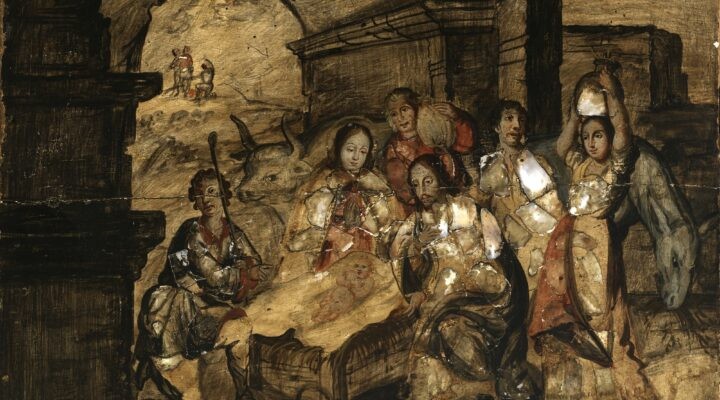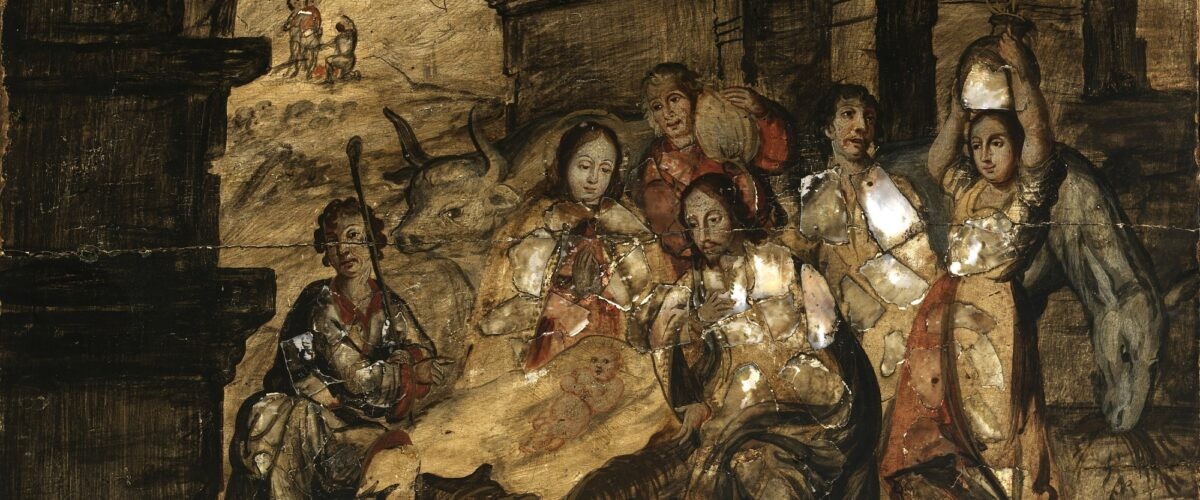This is the last in a three-part Advent series.
Dietrich Bonhoeffer always brings me up short when he emphasizes the indicative rather than imperative voice in Paul’s thought and in Christian ethics more broadly. For example, in terms of Bonhoeffer’s work on image Christology, he emphasizes that the work of Christ in restoring the image of God in humanity is an accomplished fact, a reality that has its effect whether particular people respond or do not.
We are to understand that the human condition has been remade due to the saving work of Christ. This remaking of humanity does not depend on human response. Thus, how we view any particular person must not depend on whether this person has believed in or made progress in appropriating what God has done in Christ. It is not as if some human beings are now elevated in status over others because they believe in Christ while others do not:

David Gushee
In Christ’s incarnation all of humanity regains the dignity of bearing the image of God. Whoever from now on attacks the least of the people attacks Christ, who took on human form and who in himself has restored the image of God for all who bear a human countenance.
This approach to Christ’s restoration of the image of God in humanity does important theological and ethical work. It shifts the foundation for claims about the worth or dignity of humanity from what might be a shaky, damaged imago dei to a sturdier, restored imago Christi. Human life is dignified not just because of what it once was, or was long ago intended to be, but because of what God has done in Christ to reclaim it.
The church or Christians are not different in moral status before God, as if only those who are in the church or are actually making moral progress in conforming to the image of Christ are viewed as worthy human beings. The church is instead that community that goes ahead of the rest of humanity in seeing realities that others do not yet see and behaving accordingly.
“The church must be determined to treat all human beings with a dignity proper to what God has done on humanity’s behalf in Jesus Christ.”
One of these realities is that human dignity and worth have been restored in the saving work of Christ. So the church must be determined to treat all human beings with a dignity proper to what God has done on humanity’s behalf in Jesus Christ.
Again, we listen to Bonhoeffer:
Inasmuch as we participate in Christ, the incarnate one, we also have a part in all of humanity, which is borne by him. … Our new humanity now also consists in bearing the troubles and the sins of all others. The incarnate one transforms his disciples into brothers and sisters of all human beings. The “philanthropy” (Titus 3:4) of God that became evident in the incarnation of Christ is the reason for Christians to love every human being on earth as a brother or sister.
It is on this basis, for Bonhoeffer, that followers of Christ seek to extend love and protection to the lives of other human beings, who are our “brothers and sisters” whether “in the church-community or beyond.”
Bonhoeffer did not prefer the language of a general “reverence for life,” indeed, he explicitly rejected it. Motivation for viewing all people with dignity or sacredness and acting for the preservation, protection and flourishing of their lives for him was grounded in specific biblical and theological claims about the sovereignty of God over all of life, the commands of Christ to his disciples related to violence, and the status of all human beings as our brothers and sisters — this latter claim gaining strength through the image Christology we have been discussing.
“We should respond with awesome wonder and treat everyone with tender dignity.”
This had concrete implications in Bonhoeffer’s own moral practice — he spoke up for (non-Christian) Jews in Nazi Germany at a time when very few church leaders extended their moral concern beyond the boundaries of the church’s own (baptized) Jews.
Image Christology can thus be seen as a creative Christian reworking of the theology and the ethical possibilities of the imago dei. It elevates the moral status of all human beings and anchors that status in the person and in the completed work of Jesus Christ.
It is distinctively Christian language but has universalistic ethical implications. It is linked to the indicative of what God has done in Christ for all humanity. It is not tied to anyone’s particular beliefs, but it does gain strength from the recognition that every human being we encounter is the object of God’s redemptive and potentially transformative love in Jesus Christ. “Here,” we say as we encounter a human being, “is a member of the human family restored in the image of Christ. Here is one Christ intends to claim and transform. Here is one for whom I am called to lay down my life, as Christ laid down his life.”
Christ came into the world to make us truly human. When we look at human beings today in terms of what God has done for humanity in the incarnation, crucifixion and resurrection of Christ, we should respond with awesome wonder and treat everyone with tender dignity — which Jesus did, and which is what we should have been doing all along.
Christ showed us, and shows us, what it means to make human life truly human, as God intended it all along.
David P. Gushee is a leading Christian ethicist. He serves as Distinguished University Professor of Christian Ethics at Mercer University and is the past president of both The American Academy of Religion and The Society of Christian Ethics. He’s the author of Kingdom Ethics, After Evangelicalism, and Changing Our Mind: The Landmark Call for Inclusion of LGBTQ Christians. He and his wife, Jeanie, live in Atlanta. Learn more: davidpgushee.com or Facebook.
Related articles:
Christ came to make us truly human: Human sinfulness and the image of God
Christ came to make us truly human: Remade in the image of Christ


